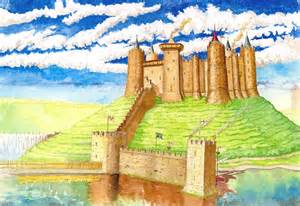Medieval Berwick and Blog Tour Updates
The past days have continued to be busy on the blog tour.
Blog O' the Irish posted my guest blog on the shared culture of Scotland and Ireland, including Edward Bruce's brief stint as the last (Scottish) High King of Ireland, and posted a review, saying, in part: "I love a good time travel story and The Blue Bells of Scotland is a very good story.... Blue Bells of Scotland is a historical/contemporary novel at the same time filled with Scottish history and I look forward to read more in this great trilogy. A very enjoyable read."
Blog O' the Irish posted my guest blog on the shared culture of Scotland and Ireland, including Edward Bruce's brief stint as the last (Scottish) High King of Ireland, and posted a review, saying, in part: "I love a good time travel story and The Blue Bells of Scotland is a very good story.... Blue Bells of Scotland is a historical/contemporary novel at the same time filled with Scottish history and I look forward to read more in this great trilogy. A very enjoyable read."
I made a stop at Night Owl Reviews with a guest post on the contrasting lives of two men who are not so different underneath, and posing the question of how much our environment affects who we turn out to be.
Hot Author Report posted an interview, including the question about characters who behave with a mind of their own.
Medieval Berwick
In my research today, I'm taking a quick visit to medieval Berwick. Berwick sits on the border of England and Scotland, a location which led to it being the center of warfare. From 1147 to 1482, it changed hands at least 13 times, finally becoming and remaining English. It started with the town being given to Henry II of England as ransom for William I of Scotland in 1174. Richard I--the Lionheart--sold it back to Scotland to raise money for his Crusades in the late 1100's, and in 1216, King John of England destroyed the town, personally overseeing a barbaric slaughter of its inhabitants. (Is there any other kind?)
In the time surrounding Scotland's Wars of Independence, Berwick got on the wrong side of Edward Longshanks, King of England, by signing the treaty of the Scots king, John Balliol, with France, Edward's enemy. In retaliation, Longshanks laid siege to the town, ending with a vicious assault on March 30, 1296, in which his men killed 8,000 townspeople, including hunting them down where they sought sanctuary in churches. Only when he saw his men hacking a woman to death in the very act of giving birth did some minor shred of humanity attempt to rear its head, and he called a stop to the carnage.
That brief flicker of humanity was short-lived, however. In August, he summoned 2,000 of Scotland's nobles to Berwick, still fresh from the slaughter, commanding them to swear homage to him by signing the Ragman Roll. Among these nobles was the young Robert the Bruce. Nigel Tranter, the Scottish historian and novelist, portrays this scene vividly, describing the town still stinking and bloody from the previous slaughter, as a stark message to the nobles of Edward's power. Not surprisingly, they fell in line and swore their heartfelt fealty as ordered.
In 1305, tradition has it that one of William Wallace's arms was sent to Berwick for display and warning against others who might rise against the English invasion. In 1306, the unfortunate Isabel MacDuff, Countess of Buchan, was locked in a cage and forced to live there, hanging from the walls of Berwick for some four years. (Her crime? Crowning Robert the Bruce.) In October, Bruce's brother Nigel was executed at Berwick. Four years later, Edward II wintered in Berwick.
In June of 1314, Edward II of England mustered his men at Berwick, and following his disastrous defeat, it was to Berwick he fled.
It would be almost four years before the Scots would finally take Berwick back, in an attack on April 1, 1318, following a three-month-long siege. The loss of Berwick was a powerful enough incentive for Edward II to set aside his differences with Lancaster long enough to launch an effort at regaining Berwick in the summer of 1319, but Walter the High Steward, with the aid of the Flemish military engineer, John Crabb, held them off. In order to assist them--knowing they couldn't hold off forever--Bruce ordered James Douglas to mount more raids on Northern England. This soon led to The Chapter of Myton,a disastrous loss for the English. Lancaster, who came from the north of England, abandoned the siege of Berwick to look to his home, family, and property. Without Lancaster's help, Edward was forced to abandon the siege, and the Scots retained Berwick.
If you enjoyed this post, you might like others on medieval Scotland:
Kingdom Without Castles This Day in Scottish History: July 10
Castle Tioram Linlithgow Berwick and the Bruce
Kingdom Without Castles This Day in Scottish History: July 10
Castle Tioram Linlithgow Berwick and the Bruce
If you enjoy an author's posts, please like and share.
It helps us continue to do what we do!







Comments
Post a Comment